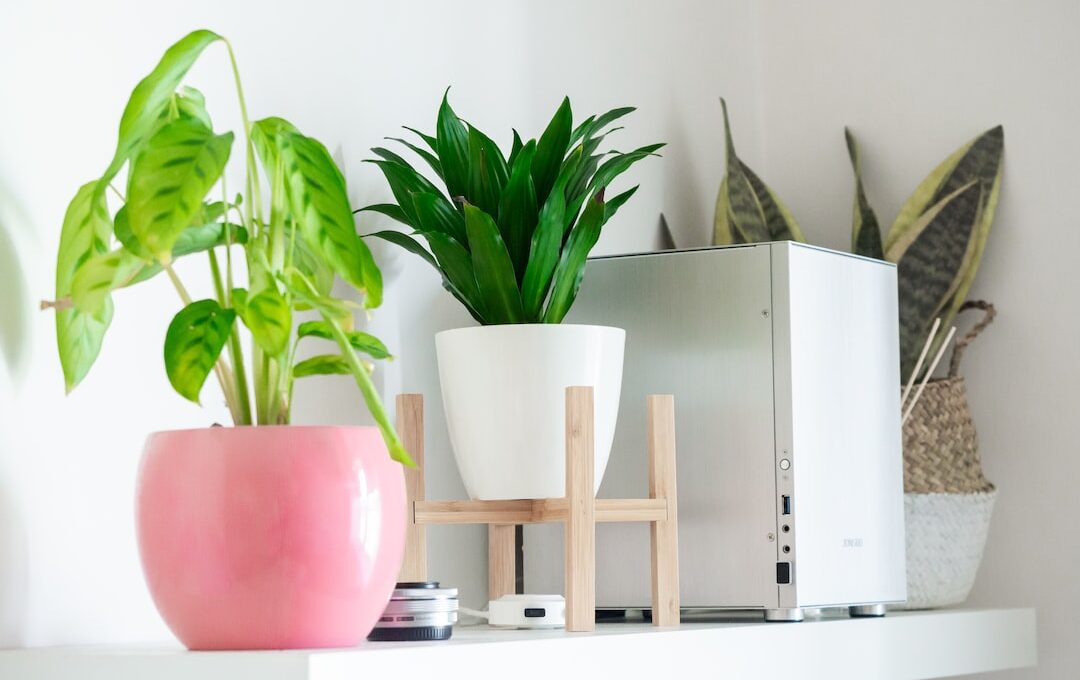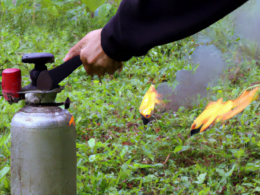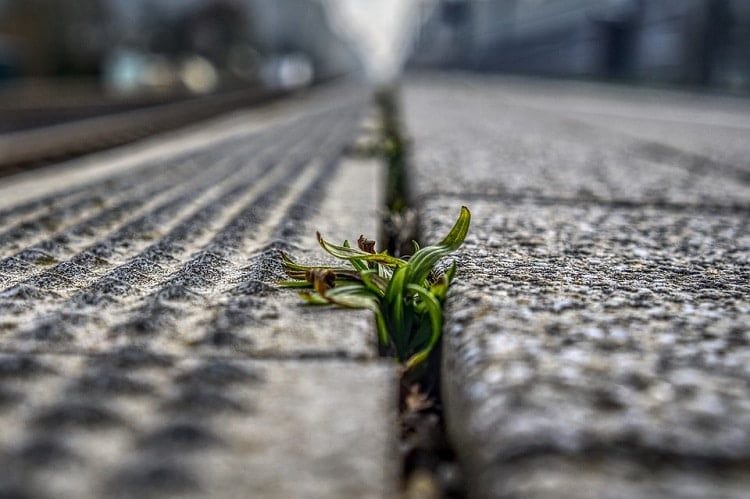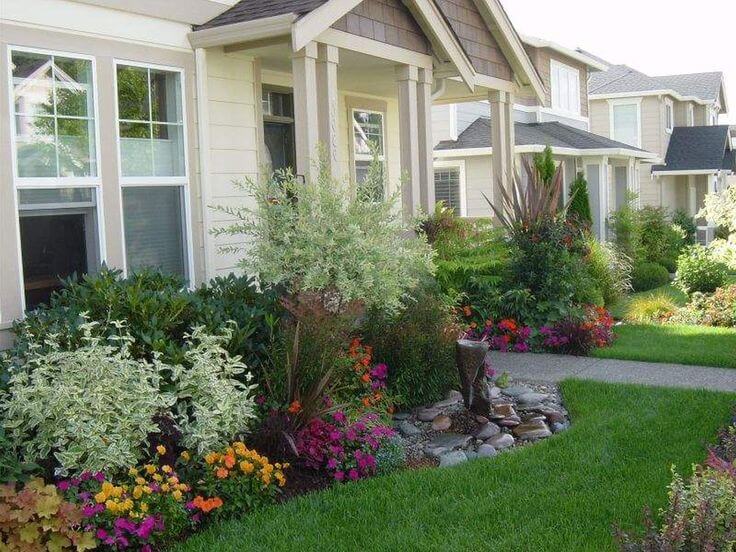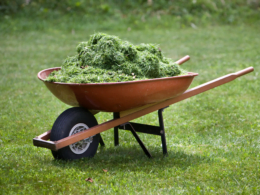Are you considering adding a potted dracaena plant to your home or office? It’s important to know how long these plants typically last and how to care for them to ensure their longevity.
In this article, we will explore the lifespan of potted dracaena plants and provide you with tips on how to provide the right care. By following these guidelines, you can avoid common problems and pests that can shorten the lifespan of your dracaena.
We will also discuss how to recognize signs of decline and the importance of pruning and repotting. Additionally, we will cover the role of proper fertilization in extending the lifespan of your dracaena. Different dracaena varieties require different care, so we will provide guidance on adjusting your care based on the specific variety you have.
Lastly, we will touch on troubleshooting and when it may be necessary to seek professional help. With the right care and attention, you can ensure that your potted dracaena lasts for years to come.
Quick Summary
- Potted dracaena plants can last for several years with proper care.
- Finding the right spot with bright but indirect sunlight is important for dracaenas.
- Proper watering is crucial, allowing the top inch of soil to dry out before watering again.
- Regular pruning, repotting, and fertilization are important for the longevity of dracaena plants.
Understanding the Lifespan of Potted Dracaena Plants
If you’re wondering how long potted dracaena plants last, you’ll be pleased to know that they can stick around for several years! These beautiful plants can bring life and greenery to your home or office space for quite some time with proper care.
To ensure the longevity of your potted dracaena, there are a few care tips to keep in mind.
Firstly, it’s important to find the right spot for your dracaena. They prefer bright but indirect sunlight, so placing them near a window with sheer curtains or in a well-lit room is ideal. Avoid exposing them to direct sunlight as it can scorch their leaves.
Secondly, watering is crucial for the health of your dracaena. They prefer their soil to be slightly moist but not waterlogged. Overwatering can lead to root rot, so it’s best to let the top inch of soil dry out before watering again. Additionally, using room temperature water is recommended.
Lastly, being aware of common problems can help you address them promptly. Yellowing leaves may indicate overwatering, while brown tips could be a sign of underwatering or low humidity. Pests like spider mites can also be a concern, so regularly inspect your plants for any signs of infestation.
By following these care tips and being attentive to any issues that may arise, your potted dracaena can thrive and last for several years, bringing beauty and serenity to your space.
Providing the Right Care for Longevity
To ensure the longevity of your potted dracaena plants, it’s important to provide the right care.
This includes mastering proper watering techniques, such as allowing the soil to dry out slightly between waterings.
Additionally, you should strive to provide ideal lighting conditions, ensuring your dracaena receives bright, indirect light.
Lastly, maintaining suitable temperature and humidity levels is crucial. Dracaenas thrive in temperatures between 60-75°F and prefer a moderately humid environment.
Proper Watering Techniques
Watering dracaena properly ensures their longevity and brings joy to your indoor gardening experience. To prevent overwatering, it is crucial to understand the frequency of watering. Dracaena plants prefer to dry out slightly between waterings, so it’s best to wait until the top inch of soil feels dry before watering again. Overwatering can lead to root rot and other problems that can shorten the lifespan of your potted dracaena. To help you keep track of when to water, refer to the table below:
| Frequency of Watering | Signs of Proper Watering | Signs of Overwatering |
|---|---|---|
| Every 1-2 weeks | Healthy foliage | Yellowing leaves |
| Wilting | ||
| Mushy or foul-smelling soil |
By following these watering techniques, you can ensure the safety and longevity of your potted dracaena. Happy gardening!
Ideal Lighting Conditions
When it comes to creating the perfect environment for your dracaena, finding the ideal lighting conditions is key. Providing your potted dracaena with the right amount of light is essential for its growth and overall health. Here are some important points to consider:
- Place your dracaena in a location where it can receive bright, indirect sunlight.
- Avoid placing it in direct sunlight, as this can cause the leaves to burn.
- Rotate the plant periodically to ensure even exposure to light.
- Consider using artificial light sources, such as fluorescent lights, if natural light is limited.
Having ideal lighting conditions for your dracaena has several benefits. Natural light provides the necessary energy for photosynthesis, which helps the plant produce its own food. It also promotes healthy leaf coloration and growth.
Remember, finding the right balance of light will lead to a thriving and long-lasting potted dracaena.
Suitable Temperature and Humidity Levels
Maintaining appropriate temperature and humidity levels is crucial for the optimal growth and well-being of your dracaena plant. To ensure your potted dracaena thrives, it’s important to provide a suitable temperature range.
Ideally, the temperature should be between 65 and 80 degrees Fahrenheit (18-27 degrees Celsius). Avoid exposing your dracaena to extreme temperatures or drafts, as they can cause stress and damage to the plant.
Additionally, humidity control is essential. Dracaena plants prefer moderate humidity levels, around 40-50%. You can mist the plant with water or place it near a tray filled with water to increase humidity. However, be cautious not to overwater as excessive moisture can lead to root rot.
By maintaining suitable temperature and humidity levels, you’ll ensure the longevity and vitality of your potted dracaena.
Avoiding Common Problems and Pests
To ensure your potted dracaena thrives, it’s important to be aware of common problems and pests to avoid. Here are four important tips to help you prevent pests and common diseases and ensure the safety of your plant:
-
Keep an eye out for spider mites: These tiny pests can infest your dracaena and cause leaves to turn yellow and wither. Regularly inspect the undersides of leaves and spray with a gentle insecticidal soap to keep them at bay.
-
Don’t overwater: Overwatering can lead to root rot, one of the most common diseases in potted dracaena. Make sure the soil is well-draining and allow it to dry out slightly between waterings.
-
Avoid direct sunlight: While dracaena plants enjoy bright light, direct sunlight can scorch their leaves. Place your potted dracaena in a location with bright, indirect light to prevent leaf burn.
-
Keep a clean environment: Dust and debris can accumulate on the leaves, attracting pests and hindering the plant’s health. Regularly wipe the leaves with a damp cloth to keep them clean and ensure your dracaena remains pest-free.
By following these simple steps, you can prevent common problems and pests, allowing your potted dracaena to thrive and bring beauty to your space for years to come.
Recognizing Signs of Decline
If you notice yellowing or wilting leaves on your potted dracaena, it may be a sign of decline.
Stunted growth or a lack of new shoots can also indicate that your plant is in decline.
Additionally, root damage or rot can greatly affect the health of your potted dracaena.
Yellowing or Wilting Leaves
Don’t ignore the yellowing or wilting leaves of your potted dracaena, as they’re a cry for help from your beloved plant.
Wilting leaves and discolored leaves are clear signs that something isn’t right with your dracaena. These symptoms could indicate a variety of issues, such as overwatering, underwatering, or even pest infestation.
To ensure the safety and longevity of your plant, it’s crucial to address these issues promptly. Start by checking the soil moisture level and adjusting your watering schedule accordingly. Be sure to provide adequate drainage for the pot to prevent waterlogged roots.
Additionally, inspect the leaves for any signs of pests and treat them immediately. By taking these precautions, you can help your potted dracaena thrive and last for years to come.
Stunted Growth or Lack of New Shoots
Experiencing stunted growth or a lack of new shoots? Your potted dracaena might need some extra attention to flourish.
Stunted growth in potted dracaena can be caused by several factors. One common cause is insufficient light. Ensure that your dracaena is placed in a well-lit area, away from direct sunlight.
Another reason for stunted growth could be overwatering. Make sure to water your plant only when the top inch of soil feels dry. Additionally, using a well-draining potting mix can prevent waterlogged roots.
To promote new shoots, try pruning your dracaena. Trim any yellow or dead leaves to redirect the plant’s energy towards new growth.
Applying a balanced fertilizer every two to four weeks during the growing season can also encourage new shoots.
By addressing these issues, you can help your potted dracaena thrive and display healthy growth.
Root Damage or Rot
To ensure the health of your beloved dracaena, be mindful of root damage or rot, as it can hinder its growth and vitality.
Root damage can occur when the plant outgrows its pot and becomes root-bound. To prevent this, consider root pruning by gently loosening the soil and trimming any circling roots before repotting in a larger container.
Another common cause of root damage is overwatering, which leads to root rot. To prevent root rot, make sure your dracaena is planted in well-draining soil and allow the top inch of soil to dry out before watering again. Additionally, avoid letting the pot sit in standing water.
By taking these precautions, you can protect your dracaena from root damage and ensure its longevity.
Pruning and Repotting for Optimal Health
To keep your potted dracaena in optimal health, it’s important to regularly trim any dead or diseased foliage. This will not only improve the overall appearance of the plant, but also promote new growth.
Additionally, repotting your dracaena in fresh soil and larger containers every 2-3 years will provide it with the necessary nutrients and space to thrive.
Trimming Dead or Diseased Foliage
Removing the withered or infected leaves from your potted dracaena will help revive its beauty and ensure its longevity. Here are four essential trimming techniques to prevent disease and keep your plant healthy:
-
Use clean and sharp pruning shears to make precise cuts. This’ll minimize the risk of infection and promote faster healing.
-
Trim the leaves close to the main stem, without damaging the healthy foliage. This’ll help the plant redirect its energy to new growth.
-
Remove all dead or diseased foliage, including yellowed or brown leaves. These can harbor pests or diseases that can spread to other parts of the plant.
-
After trimming, disinfect your pruning tools with a solution of one part bleach to nine parts water. This’ll prevent the transmission of any potential pathogens.
By following these trimming techniques and preventing disease, your potted dracaena will thrive and last for many years to come.
Repotting in Fresh Soil and Larger Containers
Now that you’ve successfully trimmed the dead or diseased foliage from your potted dracaena, it’s time to give it a fresh start by repotting it in new soil and a larger container. This step is crucial in ensuring the longevity of your plant. By repotting in fresh soil, you provide the dracaena with the necessary nutrients it needs to thrive. Additionally, choosing the right container is essential for the plant’s health and safety. It should have proper drainage holes to prevent waterlogging and promote root growth. To grab your attention and help you make the right choices, take a look at the table below, which highlights the benefits of using fresh soil and selecting the appropriate container for your potted dracaena.
| Fresh Soil Benefits | Choosing the Right Container |
|---|---|
| Provides nutrients for growth | Proper drainage for root health |
| Prevents soil compaction | Adequate space for root development |
| Improves moisture retention | Sturdiness to prevent tipping over |
| Reduces the risk of pests and diseases | Allows for easy watering |
| Enhances overall plant health and vigor. |
Extending the Lifespan with Proper Fertilization
Make sure you’re giving your potted dracaena plenty of nutrient-rich fertilizer to help them thrive and extend their lifespan. Proper fertilization techniques are essential for the long-term nutrient supply of your plants.
When it comes to fertilizing your potted dracaena, there are a few things to keep in mind to ensure their health and safety. Firstly, choose a fertilizer that’s specifically formulated for houseplants. This’ll provide the necessary nutrients in the right proportions. Look for a balanced fertilizer that contains a mix of nitrogen, phosphorus, and potassium. These nutrients are essential for the overall growth and development of your dracaena.
When applying the fertilizer, follow the instructions provided on the packaging. Over-fertilizing can be harmful to your plants, so it’s important to use the correct amount. Generally, it’s best to fertilize your potted dracaena every two to three months during the growing season, which is usually spring and summer.
In addition to regular fertilization, it’s important to water your dracaena thoroughly after applying the fertilizer. This’ll help prevent any potential burning of the roots and ensure that the nutrients are properly absorbed.
By providing your potted dracaena with proper fertilization, you can help them thrive and extend their lifespan. Remember to choose a suitable fertilizer, follow the instructions, and water your plants adequately. With proper care, your potted dracaena can bring beauty and greenery to your indoor space for years to come.
Is the Lifespan of Potted Easter Lilies Similar to Potted Dracaena?
The potted easter lilies lifespan is typically different from that of potted Dracaena. While Easter lilies thrive in cool temperatures and can be enjoyed indoors for about a week, Dracaena plants can live for years when provided with proper care. Both plants can bring beauty to indoor spaces, but their lifespans vary significantly.
Adjusting Care Based on Dracaena Varieties
When it comes to caring for different varieties of dracaena, it’s important to understand their unique light and water requirements. Some varieties thrive in bright, indirect light while others prefer lower light conditions.
Additionally, each variety has its own growth habits and size potential, so it’s important to research and understand how big your specific dracaena variety can get before choosing a pot or location for it.
Adjusting your care based on these factors will ensure that your dracaena thrives and lasts for a long time.
Differences in Light and Water Requirements
To keep your potted dracaena thriving, you’ll want to find the perfect balance of sunlight and water, like a delicate dance between a sunbeam and a refreshing rain shower. Watering frequency is an important factor to consider when caring for your dracaena. These plants prefer to be evenly moist but not overly saturated. It’s best to let the top inch of soil dry out between waterings.
Remember, overwatering can lead to root rot and the eventual demise of your plant. When it comes to light intensity, dracaenas prefer bright, indirect light. They can tolerate some shade, but too much direct sunlight can scorch their leaves. Place your dracaena near a window with filtered light or use sheer curtains to diffuse the light.
By finding the perfect balance of water and light, you can help your potted dracaena live a long and healthy life.
Understanding Growth Habits and Size Potential
Find the perfect spot for your dracaena and watch as it gracefully grows, reaching its full size potential and adding a touch of natural beauty to your living space. Understanding the growth patterns and container size requirements of your potted dracaena is essential for its long-term health and vitality. Dracaenas have different growth habits, with some varieties growing tall and slender, while others have a more bushy appearance. It’s important to choose a container size that allows for adequate root growth and provides stability for the plant. To help you visualize the growth potential of your dracaena, take a look at the table below:
| Variety | Growth Habit |
|---|---|
| Dracaena marginata | Tall and slender |
| Dracaena fragrans | Bushy |
| Dracaena deremensis | Compact |
| Dracaena reflexa | Twisted, vine-like |
| Dracaena sanderiana | Clumping |
By understanding the growth patterns and container size requirements of your dracaena, you can ensure that it thrives in its new home and brings you joy for years to come.
Troubleshooting and Seeking Professional Help
If you’re experiencing issues with your potted dracaena, it’s best to consult a professional for assistance. They have the expertise and knowledge to diagnose and resolve any problems your plant may be facing. Here are three troubleshooting techniques to consider when seeking expert advice:
-
Identify the symptoms: Take a close look at your dracaena and note any changes in its appearance. Is the foliage turning yellow or brown? Are there spots or discoloration on the leaves? By identifying the symptoms, you can provide accurate information to the professional, helping them determine the cause of the issue.
-
Check the environment: Ensure that your dracaena is receiving the right amount of light, water, and humidity. Improper environmental conditions can lead to various problems, such as leaf drop or pest infestations. Adjusting these factors may help alleviate the issues your plant is facing.
-
Seek professional assistance: If you’ve tried troubleshooting techniques and your dracaena is still struggling, it’s time to seek expert advice. Contact a local plant specialist or horticulturist who can provide personalized guidance and solutions specific to your dracaena’s needs.
Remember, the safety and well-being of your potted dracaena are paramount. By seeking professional help, you can ensure that your plant receives the proper care it needs to thrive.
Frequently Asked Questions
Can potted dracaena plants survive in low-light conditions?
Potted dracaena plants can survive in low-light conditions, but their growth rate may be slower. Ensure they receive indirect sunlight and provide artificial light if necessary to promote their well-being and safety.
How often should I water my potted dracaena plant?
To ensure the safety of your potted dracaena plant, water it every 1-2 weeks, allowing the soil to dry out between waterings. Signs of overwatering include yellowing leaves, wilting, and root rot.
Can I place my potted dracaena plant outdoors during the summer?
Yes, you can place your potted dracaena plant outdoors during the summer. Outdoor care for potted dracaena plants includes providing them with sunlight, which benefits their growth and overall health.
What are the common pests that can affect potted dracaena plants?
Common pests, such as spider mites and mealybugs, can harm potted dracaena plants. Look for signs like yellowing leaves and webbing. Use natural remedies like neem oil or insecticidal soap, or consider chemical options as a last resort.
Can I propagate my potted dracaena plant to create new ones?
Yes, you can propagate your potted dracaena plant to create new ones. Propagating dracaena has many benefits, such as saving money and expanding your plant collection. It’s a safe and rewarding way to grow more plants.
Conclusion
So, now you know how long potted Dracaena plants can last and how to care for them properly. By providing the right care, avoiding common problems, and recognizing signs of decline, you can extend their lifespan.
Pruning and repotting, along with proper fertilization, are essential for their optimal health. Remember to adjust your care based on the specific Dracaena variety you have. If you encounter any difficulties, don’t hesitate to seek professional help.
With these tips, you can enjoy your potted Dracaena plants for years to come. Happy gardening!





